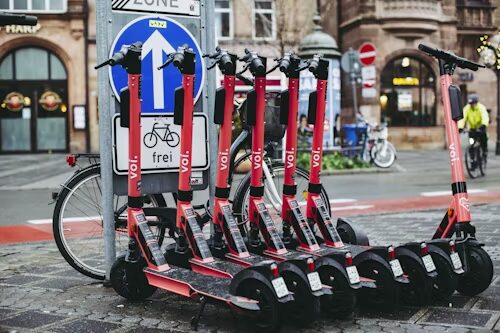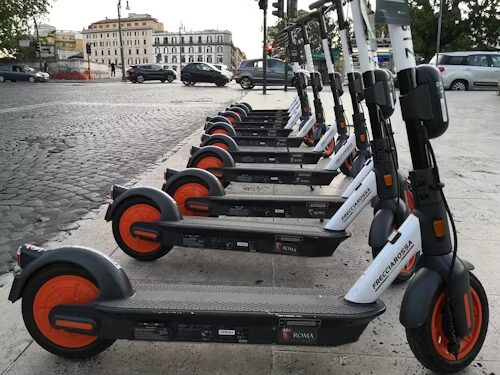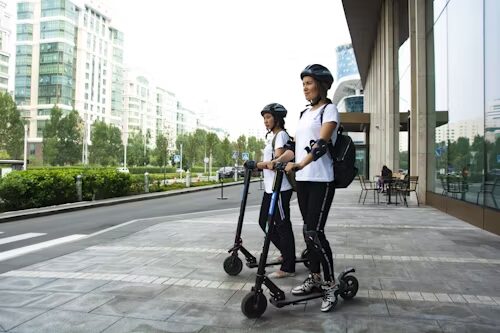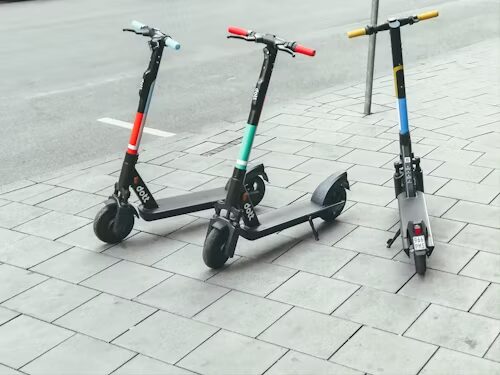Ways Electric Kicks Scooters Are Shaping Urban Landscape!
Notably, electric kick scooters have rapidly emerged as a popular micro-mobility option in urban areas worldwide. In a short time, these small electric vehicles have flooded streets and sidewalks worldwide. At first, it was just a curiosity, but scooter ridership exploded as more people sought an easy, eco-friendly way to get around.
Now, it’s only possible to walk downtown by seeing crowds of commuters zooming by on colorful scooters. The rapid rise of the scooter begs questions. How did these vehicles move so quickly from niche to necessary? How will their popularity impact how communities design and get from place to place?
This article explores the innovative role of electric scooters across impactful areas, helping shape transportation systems.
1. Last-Mile Connectivity
Electric scooters’ greatest strength is fulfilling critical “last mile” connections between public transportation stops and final destinations. By their nature, buses and trains can only transport passengers so far before switching to other modes, which is necessary to complete the journey.
By enhancing access to existing transit infrastructure, electric kick scooters multiply the reach and ridership of core public systems. They encourage multimodal trips combining micromobility with buses and trains, reducing the need for additional parking facilities or larger transit vehicles with near-empty seats.
As integrated payment options emerge, seamless transfers between scooters and public transit become barrier-free. Improving last-mile access through scooters supports sustainability by facilitating car-free mobility for more trips.
2. Convenience and Accessibility
A significant factor driving the adoption of electric kick scooters is their unparalleled convenience. With a simple scan of a QR code or a few taps of an app, riders can instantly locate the nearest available scooter, unlock it for a small fee, and zip off on their journey. They require no planning or advanced scheduling—scooters offer the freedom for spontaneous, spur-of-the-moment trips in a way no other mode of transport can match.

This flexibility makes scooters ideal for filling in gaps in an unpredictable daily schedule. Running late to a meeting? Do you need to pick up dry cleaning on your way home? Forgot the ingredients for dinner? A conveniently placed scooter can handle any unforeseen situation simply and affordably. The ease and accessibility of dockless scooter networks have turned impromptu trips into a reality.
So, by introducing new transportation alternatives, scooter systems have leveled the playing field, expanding access to all. Their presence allows even those without cars, bikes, or ease of public transit to reliably and sustainably complete essential daily trips. As cities integrate scooters into infrastructure planning, they promote the equitable movement of all residents regardless of means.
3. Environmental Sustainability
Beyond convenience or social impacts, electric scooters deliver tremendous sustainability benefits by replacing gasoline-powered car trips. Even a tiny substitution rate can improve air quality and reduce emissions in dense population centers battling congestion and associated health issues.
Thus, as communities embrace e-scooters at scale through supportive policies and infrastructure, their capacity to shift transportation habits becomes clearer. Cities worldwide are realizing meaningful emissions reductions and improved public health by facilitating scooter integration into daily transit routines.
Meanwhile, technology is rapidly progressing – improved batteries allow longer-range scooters to replace even more vehicular travel and further boost sustainability.
4. Flexible and On-Demand Transportation

A fundamental value proposition driving scooter uptake is their ability to fulfill real-time transportation needs flexibly and affordably. Also, electric kick scooters have enabled “Mobility as a service,” thus delivering freedom from rigid schedules while avoiding high taxi or TNC prices. Users can locate available vehicles via the app to instantly satisfy unforeseen trips like picking up urgent packages, running errands, or taking short work meetings—all without owning a car.
When integrated thoughtfully into transportation systems, scooters maximize system efficiency on both operational and consumer ends. Dockless operation avoids siting and maintaining stations yet locates vehicles digitally for instant access. Pricing adjusts based on demand and incentivizes responsible parking. Flexible on-demand mobility via scooters optimizes infrastructure usage.
5. Fostering Innovation
Besides, electric kick scooters have disrupted conventional transport and sparked waves of grassroots mobility innovation. The loose-knit startups initially deploying scooter fleets inspired enterprising thinkers worldwide to create novel micro-mobility solutions.

Early companies faced regulatory ambiguity, forcing creative compliance. Pilot programs and feedback cycles between riders and local governments established cooperation models nurturing progress. Minor modifications like integrated lights and alarms enhanced safety, expanding user bases.
New prototypes now debut constantly. Folding designs optimize portability, incentivizing multimodal connections. Upgrades like seat attachments broaden appeal or accommodate disabilities. Alternatives like pedal-assisted scooters lower barriers for longer commutes.
Technology, too, progresses swiftly. Advances in battery chemistry extend ranges while regenerative braking recoups lost energy. Connected features deliver real-time traffic advisories and maintenance alerts. Novel designs apply micro-mobility principles to niche applications like adjustable cargo haulers.
Final Thoughts
Electric scooters have emerged as a novelty and a mainstream transit solution, enhancing accessibility, sustainability, and innovation within mobility systems worldwide. By advancing equity, filling gaps, and integrating flexibly between modes, micro-mobility helps maximize infrastructure while inviting new users onto better-connected, lower-carbon networks. With continued cooperation among all stakeholders, strategic policies, and adapted street design, e-scooters will continue driving transportation toward more sustainable futures.







